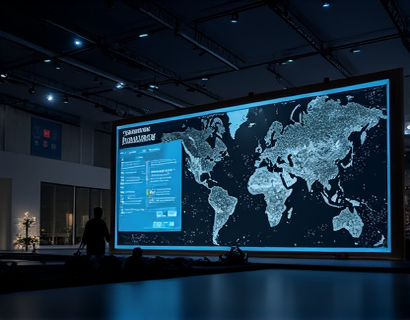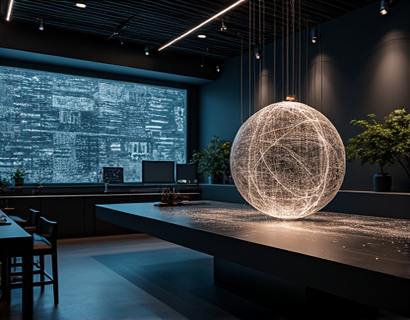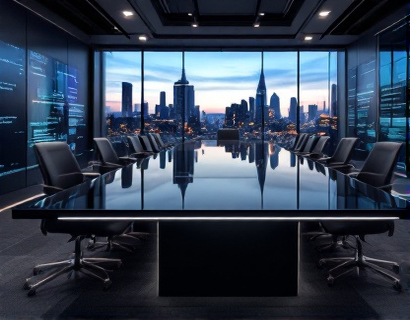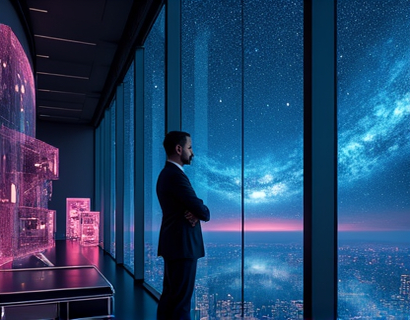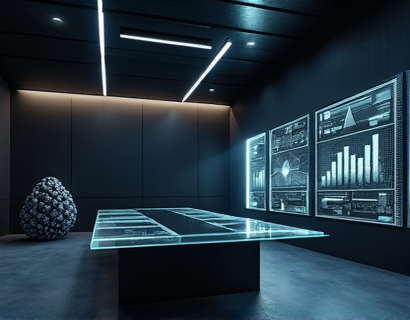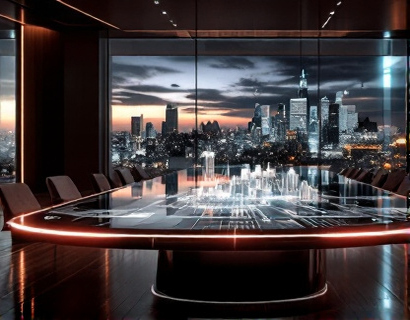Transforming Daily Life with Augmented Reality E-Commerce
In the rapidly evolving landscape of technology, augmented reality (AR) has emerged as a transformative force, particularly in the realm of e-commerce. This innovative approach blends the digital and physical worlds, offering consumers unprecedented ways to interact with products before making a purchase. For tech-savvy individuals seeking to enhance their lifestyle, AR e-commerce presents a compelling opportunity to experience the future of shopping. This article delves into how AR is revolutionizing the way we shop, providing insights into the benefits, applications, and the future of this technology in e-commerce.
Understanding Augmented Reality in E-Commerce
Augmented reality in e-commerce refers to the integration of digital information and images into the real world, enhancing the user's perception and interaction with products. Unlike virtual reality, which creates a completely artificial environment, AR overlays digital content onto the physical world, allowing users to see and interact with virtual objects as if they were part of their surroundings. In the context of online shopping, this technology enables customers to visualize products in their own space, making the shopping experience more immersive and informed.
Benefits of AR for Consumers
One of the most significant advantages of AR in e-commerce is the ability to reduce uncertainty and increase customer confidence. Traditional online shopping often lacks the tactile experience of physical stores, leading to doubts about product fit, size, and appearance. AR bridges this gap by allowing users to see how products would look and fit in their environment. For instance, a customer can use an AR app to visualize furniture in their living room, ensuring it matches their decor and fits the available space. This not only enhances the shopping experience but also reduces the likelihood of returns, benefiting both the consumer and the retailer.
Moreover, AR can provide detailed product information in an engaging and interactive manner. By pointing their device's camera at a product, users can access reviews, specifications, and usage tips, all presented in a contextually relevant way. This enriched information helps consumers make more informed decisions, leading to higher satisfaction and loyalty.
Enhancing Product Visualization
Product visualization is a critical aspect of online shopping, and AR takes this to new heights. Traditional product images and videos can only so much to convey the true nature of a product. With AR, consumers can see products from multiple angles, zoom in for detailed views, and even manipulate the product in a virtual space. This level of interactivity is particularly valuable for complex or high-value items, such as electronics, fashion, and home decor.
For example, in the fashion industry, AR allows users to virtually try on clothes and accessories, seeing how they look without the need for physical items. This not only saves time but also provides a more accurate representation of how the product will look and fit. Similarly, in home decor, AR apps enable users to place virtual furniture and decor items in their rooms, adjusting sizes and positions to find the perfect fit. This immersive experience helps consumers visualize their desired lifestyle, making the shopping process more enjoyable and effective.
Personalization and Customization
AR technology also opens up new possibilities for personalization and customization in e-commerce. Consumers can use AR to create custom versions of products, tailoring them to their specific preferences and needs. For instance, a customer can design a personalized piece of jewelry, seeing the final product in real-time and making adjustments as desired. This level of customization not only enhances the shopping experience but also fosters a deeper connection between the consumer and the product.
Furthermore, AR can be used to offer personalized recommendations based on a user's preferences and past interactions. By analyzing user data and behavior, AR systems can suggest products that align with the user's style and needs, creating a more tailored shopping experience. This personalized approach not only increases customer satisfaction but also drives sales and customer retention.
Seamless Integration with Existing Platforms
The integration of AR into e-commerce platforms is becoming increasingly seamless, thanks to advancements in technology and user-friendly design. Many modern e-commerce websites and mobile apps now support AR features, often with minimal setup and easy-to-use interfaces. These platforms leverage cloud-based AR solutions that require no additional hardware, making it accessible for a wide range of consumers.
For instance, popular retail websites have incorporated AR try-on features directly into their product pages. Users can simply click an "try on" button, and the AR engine will overlay the product onto their camera feed. This integration is designed to be intuitive, requiring no technical expertise and providing an immediate value to the user. As AR technology continues to evolve, we can expect even more sophisticated and user-friendly implementations in the future.
Case Studies and Success Stories
Several companies have successfully leveraged AR to enhance their e-commerce offerings and drive customer engagement. One notable example is IKEA, which developed an AR app called IKEA Place. This app allows users to visualize furniture in their home before making a purchase. By using their smartphone or tablet camera, customers can see how a sofa, table, or lamp would look and fit in their space. This has not only improved the shopping experience but also reduced return rates, as customers are more confident in their purchases.
Another successful implementation is in the beauty industry, where brands like Sephora have introduced AR-powered virtual try-on features. Users can see how makeup products would look on their face without the need for physical samples. This not only enhances the customer experience but also aligns with the brand's commitment to sustainability by reducing waste from unused products.
Challenges and Considerations
While the benefits of AR in e-commerce are clear, there are also challenges and considerations that need to be addressed. One of the primary challenges is ensuring a consistent and high-quality user experience across different devices and platforms. AR technology must be optimized for various screen sizes and operating systems to provide a seamless experience for all users.
Another consideration is the accuracy and realism of AR overlays. For AR to be truly effective, the virtual objects must be accurately placed and rendered in the real world. This requires advanced computer vision and machine learning algorithms to ensure that the digital content aligns perfectly with the physical environment. Continuous improvements in AR technology are necessary to overcome these challenges and provide a more convincing and engaging experience.
Future Trends in AR E-Commerce
The future of AR in e-commerce is promising, with several trends shaping the industry. One significant trend is the integration of AR with other emerging technologies, such as artificial intelligence (AI) and the Internet of Things (IoT). AI can enhance AR experiences by providing more personalized and context-aware recommendations, while IoT devices can enable more interactive and connected shopping environments.
Another trend is the rise of AR-enabled social commerce, where users can share their AR experiences with friends and followers, creating a more social and community-driven shopping experience. This not only increases engagement but also leverages the power of social proof to influence purchasing decisions.
Additionally, as 5G networks become more widespread, AR experiences will become faster and more responsive, allowing for more complex and immersive interactions. This will open up new possibilities for virtual shopping events, augmented reality games, and interactive product demonstrations, further enriching the e-commerce landscape.
Conclusion
Augmented reality is transforming the e-commerce landscape, offering consumers a more immersive, informative, and personalized shopping experience. By enabling accurate product visualization, enhancing customization options, and integrating seamlessly with existing platforms, AR is setting a new standard for online shopping. As technology continues to advance, we can expect even more innovative applications of AR in e-commerce, further blurring the lines between the digital and physical worlds. For tech-savvy consumers seeking to elevate their daily lives, AR e-commerce represents an exciting frontier, promising a future where shopping is not just a transaction but an enriching and enjoyable experience.




















